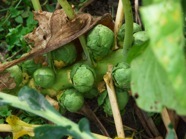
Bl-Bu
BLACK CUMIN
Black Cumin or nigella sativa is an easy to grow plant, the seeds are used as a condiment, added to rice dishes, and so on. The plants want a bit of warmth, remain small and aren’ t very productive. But the taste of the seeds is not bad (they are sold sometimes as ‘false onions’, because of the resemblance of the seeds .
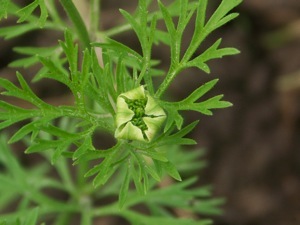
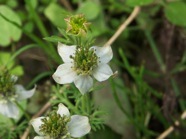
BLACK SALSIFY
Scorzonera hispanica, grown since ages. The black roots are peeled (yes, you get black fingers doing that), and eaten. They have a very good, tender taste. The plants are easily grown, don’t sow them too early or they will run to seeds in their first year, and the roots will remain small. There are some varieties that bolt less than others. The leaves, especially young, are added to salads, or even prepared as spinach. Bare in mind when you pick the leaves from root or tuber vegetables, roots or tubers are likely to become less big. Black salsify is mostly harvested and eaten during wintertime, the roots can be quite long, up to 25 cms, so make sure you can dig a big hole. In the second year, when the plants begin to flower, you can eat the unopened flower buds as a good salad addition.
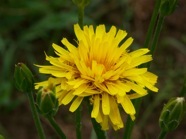
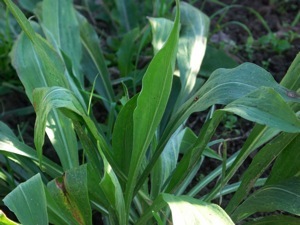
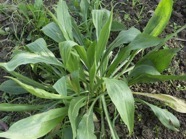
BORAGE
Once you get this one in your garden, you will see it returning every year, although the seeds are too heavy to make it a really invasive plant.
The plants can grow quite wide, they make a very colourful addition to the garden, with their edible blue flowers and very striking green foliage. The leaves of borage (borago officinalis ) are eaten in salads and have a cucumber-like taste, they can off course also be prepared as some sort of spinach (but the taste can become a bit bland then). The plants are one of the earliest to pop up spontanouisly in the garden, and are also a fast and easy green fertilizer.
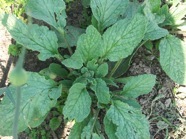
BROCCOLI
This is something I’m trying to grow all-year round. Many varieties exist, and especially during mild winters it’s possible to have this cyclus complete. In summer I plant out ‘regular’ broccoli (brassica oleracea), and within sixty to ninety days I get a harvest of the good-tasting unopened flower stalks (I always grow varieties that resrout after the main flower stalk has been harvested, so I get several harvests of these plants). At the same time I plant out some ‘early sprouting ‘ varieties, who give me a crop the next spring, lots of fine-tasting small broccoli heads, different colours are available , purple, white , green... In late summer I sow some more broccolis, just to get a late autumn and winter harvest.
There’s also a perennial broccoli, nine star perennial, I placed this under the perennial kale section.
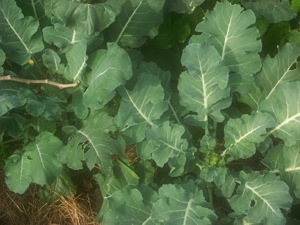
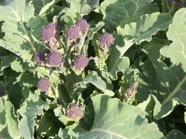

BROCCOLI RAAB
Brassica rapa (ruvo). This one is more related to the turnip and Chinese kales than to broccoli (see above). The plants are sown preferably in spring or summer, and also sometimes called brocoletto. The young, unopened flower buds are eaten, they are produced in abundance, but, unfortunately, on the varieties I have tried, they remain small. They can be used everywhere broccoli can be used, I especially like to eat some varieties raw. The flowers are (as with most brassicas) also edible, although they have a stronger taste. Leaves can be eaten as well, mixed up in salads, or prepared in hot dishes. The plants can be sown quite close to each other, they don’t grow really wide, and produce some flower heads very quickly.

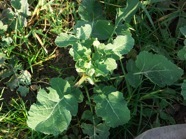
BRUSSELS SPROUTS
Again a brassica oleracea, lots of our cabbages or kales have been grown from wild brassicas, with sometimes surprising results.
This is one of the most recent developed well-known brassicas, probably derived from an off-type from savoy kale, and first described around the year 1750. The little sprouts grow on the main stem, and are produced in abudance. They’re very tasty, and some varieties are especially winter hardy (some varieties are also selected for autumn production). They need a quite long growing season, so sow them in April, give them the necessary nutrition (all brassicas like that), and if you don’t have any problem with all sorts of brassica diseases or pests, you’ll get a nice crop during autumn or winter. When the plants begin to grow during the next spring, you can also harvest the top head, which is very tasty. Or you can use the unopened flower buds as a sort of broccoli...
There are quite a bit of varieties , including at least a reddish coloured one, rubine (but that one is less productive....)

